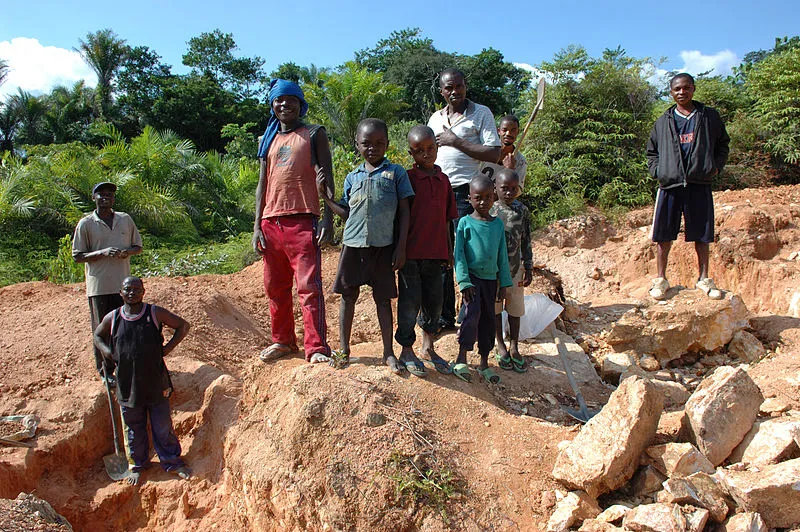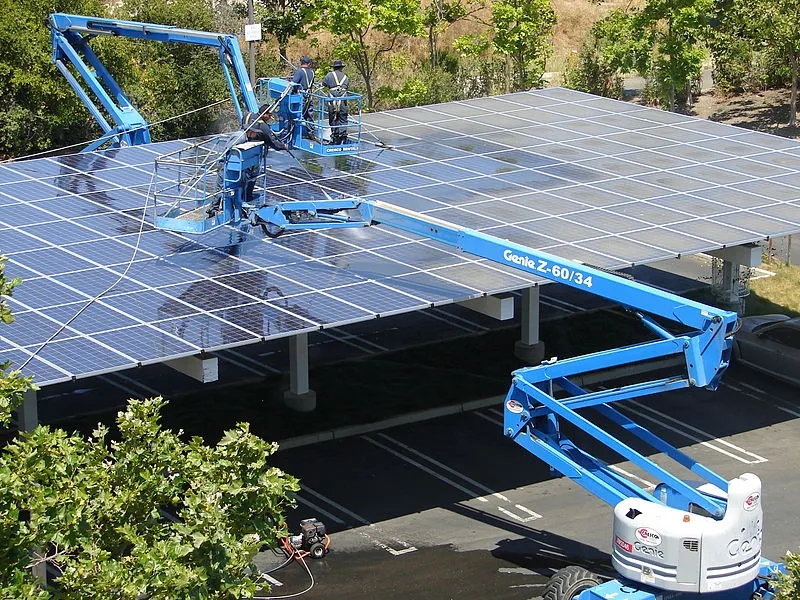Today, the energy needs of the world keep rising. The energy consumption is at an all-time high- the world is an Oliver and it is continually asking for more. As cliche as it sounds, the above is true. Environmental activists have not ceased informing the world of the need for a clean energy. Alternatives such as the renewable energy such as solar are often mentioned in the category of clean energy. Nuclear power, too, possesses the ability to remove 64 gigatonnes of carbon dioxide plus prevent deaths of up to 1.84 million people as a result of pollution-related mortalities which is an outcome of the overdependence on fossil fuel between the year 1971 to 2009.

[image credits: Pixabay Commons]
The global climate change is a hot topic of discussion in the annual meetings of the United Nations Climate Change conference from 1995 to date to discuss a better way to reduce the drastic effect of pollution to our environment.
Let's take a look at the renewable energy which involves the battery. There is a 90% chance you are reading this article/story in a battery powered device. If you can shell out between $68,000 to $138,000 you may be a proud owner of a Tesla car and may probably pat yourself on the back to contributing to less pollution to the world. You may also have a laptop or phone with big size battery that can last for hours; which is good as it saves on the electric bill and in other words help save the world from pollution from fossil-generated electricity.
Those are all good ways of leaving less carbon footprint to save the environment but lithium-ion batteries are made from Cobalt, a mineral mined from the earth's crust and even under the seafloor below the earth's crust. Cobalt, the sometimes underrated metal, has a lot of uses. Up to 42% of this use is in batteries, with the rest of it as alloys, tool materials, catalysts, colour pigments in paints, magnets, soaps, etc.
The world's major supplier of cobalt is the Democratic Republic of the Congo (DRC). The Central African country accounts for 50% of the world's cobalt supply. Most of the miners dig the ground armed with shovels and hammer. The people are poor and slave every day to extract cobalt from mines poorly managed by mine owners whose only concern is the cobalt and the price it will fetch in the international market. The risk of cave-ins or contracting serious diseases from the fumes inhaled daily is taken as part of the everyday hustle to survive by the poor miners.
The Center for Disease Control in the U.S has also stated the increased health risk involved in cobalt mining to the lungs especially through inhalation of the cobalt-rich dust and fumes which is common to the workers in the DRC who are as poor equipped as their health protection gear which is nonexistent.
The lung diseases such as the "hard metal lung disease", a disease which occurs due to long-term exposure o particles of metal such as carbide, cobalt are diseases commonly found amongst cobalt miners/residents living within the mines in the DRC according to this research.
Even if we are to forget the health implication of the mining community, there is an Amnesty report, "THIS IS WHAT WE DIE FOR", that examines the use of child labour, which is almost reminiscent of the 2006 movie, The Blood Diamond which follows the human right abuses and how diamonds finances guerilla warfare in the Siera Leone Civil War of 1992-2002.

[image credits: Wikipedia Commons]
Unscrupulous mine operators engage services of children who they easily exploit. They work for them for long hours in exchange for peanuts. Due to the level of hardship in the area, these children born to poor parents may never know they are exploited. They just get used to waking up early in the morning and working till night in the mines to earn less than $2 or less for their struggles.
Just like many jewellers did not do business or pay for "blood" diamonds (or diamonds gotten from conflict zone, use of slave labour, etc) through the use of the Kimberley Process, the US tech giant, Apple, recently announced that it will no longer buy cobalt gotten via manual hand mining.
The environment feels the toll of all these mining activities. The byproducts of mining (waste) pollute drinking water and the rivers with disastrous effect on the host community. The story is similar to the oil spills in the Niger-Delta area in Nigeria due to oil exploration activities with an increased infant mortality, and birth defects to newborn registered.
The toll of the cobalt mining industry on health and the environment.
Moving on from the cobalt, a constituent of the lithium battery, we enter the field of photovoltaic (PV) panels. We already know the world in the bid to reduce dependency on fossil fuel and reduce pollution, now tries to harvest a percentage of the gazillion watts, about 3.86 x 1026 watts of energy produced daily by the Sun.
Solar power is one of the sources of energy deemed to be extremely clean. An estimate puts the number of tonnes of greenhouse gases a 3KW solar system takes off annually from the earth to about 2.5 tonnes.
But producing the solar panels are not as green as many may think. One of China's main manufacturer of solar panels, Jinko Solar with a 9.81-gigawatt shipment of solar panels got entangled on a lawsuit over pollution in China's Zhejiang province where waste product disposed of in rivers poisoned it and killed their fishes. The villagers did protest this pollution to their waters and destroyed some of the company's property. The 500 man protest is just one in a series of another backlash from host communities where solar products are manufactured in China.
While much green energy enthusiast, myself included :), is keen on getting solar panels that will be more efficient, only a few show interest in recycling solar panels/. Part of the problem may be the long lifespan of solar panels- between 15 to 25 years.

[image credits: Wikipedia Commons]
The United States, for instance, have an estimated installed solar power of about 10.6 GW as at 2017. That means in the next 30 years we will have about 35.3 million solar panels that have reached their expiration date. Part of the problem of recycling may be due to the complex nature of it as each component of the solar panels will have to be separated. The metal part contains different metals such as copper, lead, cadmium, gallium, aluminium frames, silicon wafers used in the production of solar cells plus the encapsulating synthetic silicon material.
Even though the renewable energy may not be as green as many hoped; I think many are never bothered about this, because how then can you make an omelette without breaking the eggs?
We are made to choose the lesser evil and the renewables stand very much stands tall amongst the other giants- energy-generating process.
References
- How does Cobalt Work in Li-ion?
- THE COBALT PIPELINE- Tracing the path from deadly hand-dug mines in Congo to consumers’ phones and laptops
- TESLA'S ELECTRIC CARS AREN'T AS GREEN AS YOU MIGHT THINK
- How Green Are Those Solar Panels, Really?
If you write STEM (Science, Technology, Engineering, and Mathematics) related posts, consider joining #steemSTEM on discord here. If from Nigeria, there may be need to include the #stemng tag in your post. You can visit this blog by @stemng for more details. You can also check this blog post by @steemstem here and this guidelines here for help on how to be a member of @steemstem. Please also check this blog post from @steemstem on proper use of images devoid of copyright issues here
Would you like to delegate to the @steemstem? Here is a link below
50 SP | 100SP | 500SP | 1,000SP | 5,000SP | 10,000SP | 50,000SP
